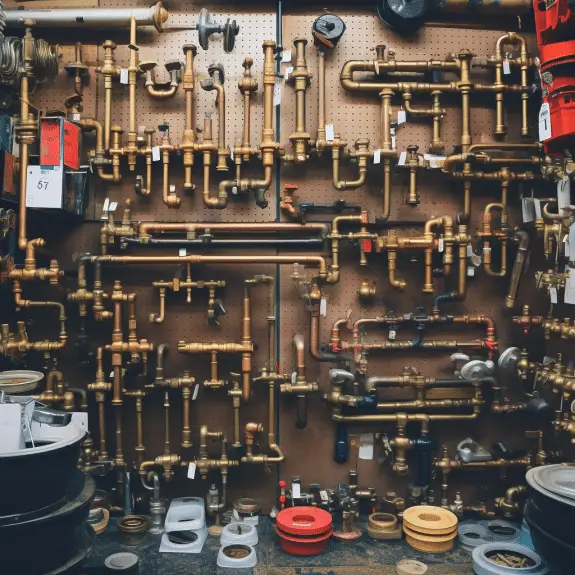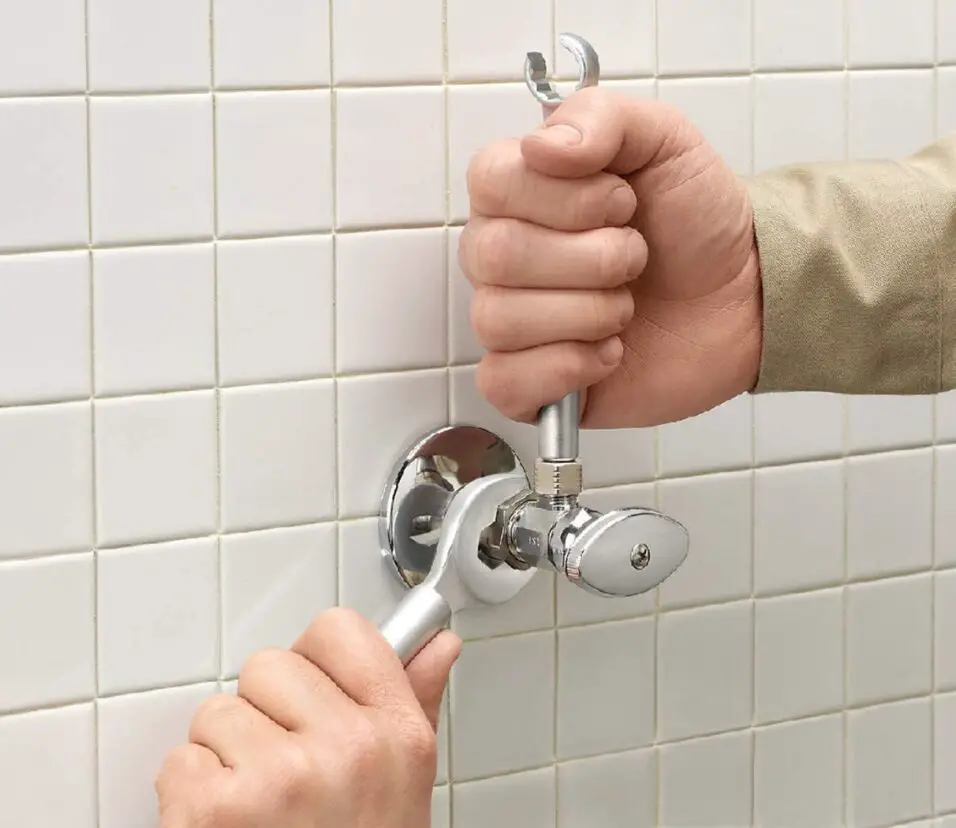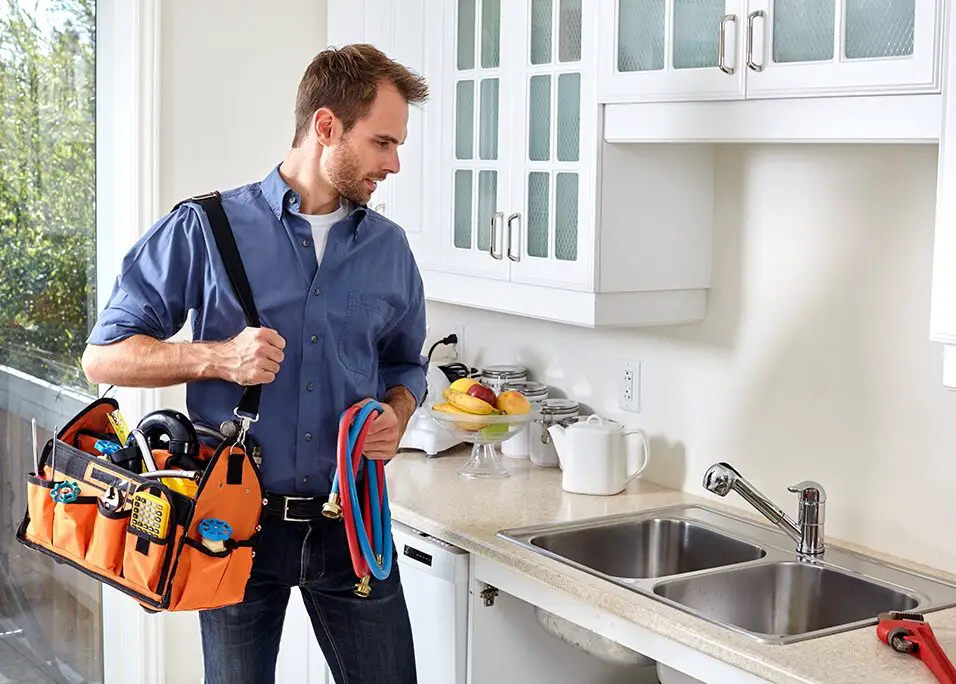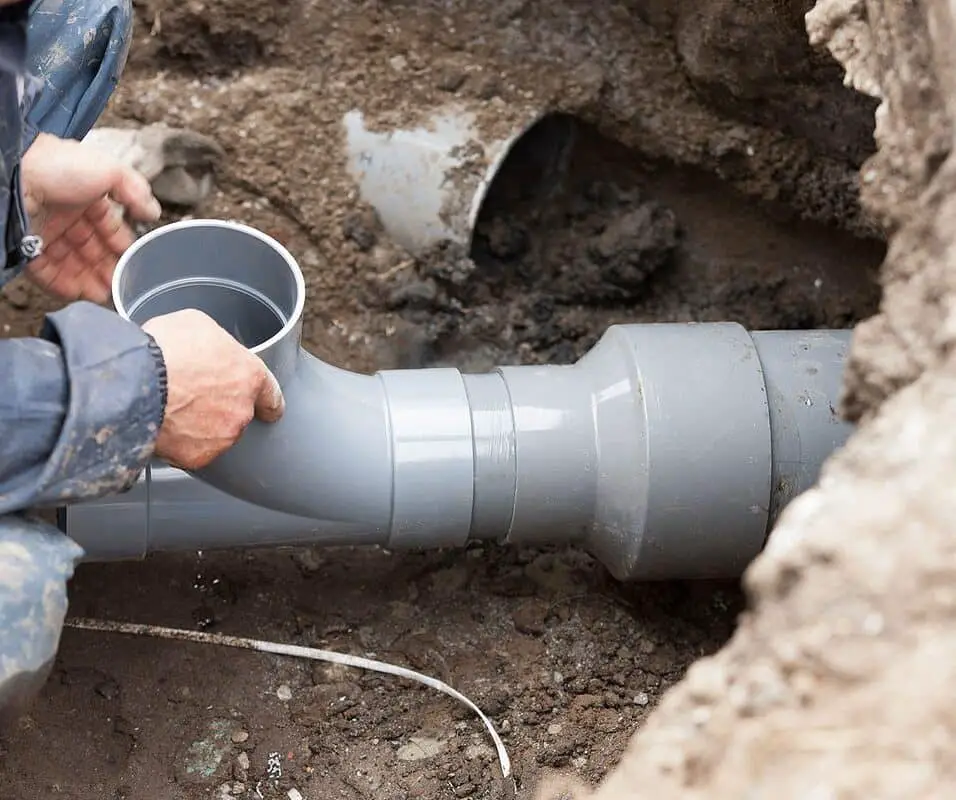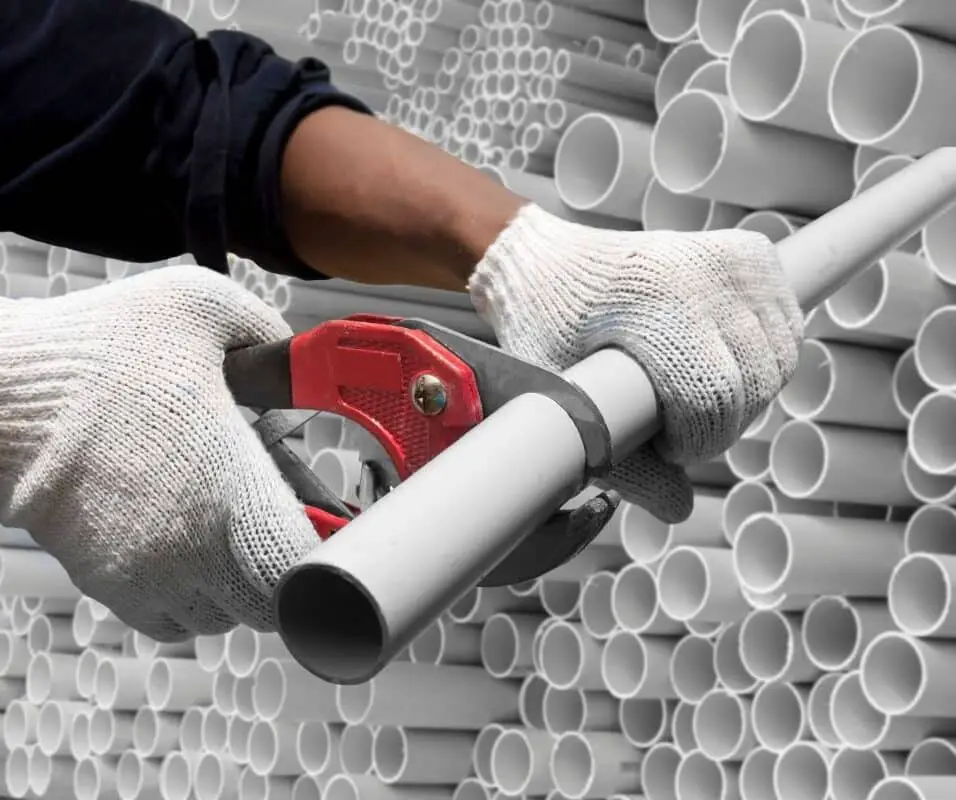What Is An Auger For Plumbing
Introduction
An auger is an indispensable tool in the world of plumbing, serving as a versatile and effective solution for clearing clogged drains and pipes. Also known as a plumber’s snake or drain snake, an auger is designed to remove blockages that hinder the proper flow of water and waste. It is a long, flexible cable-like instrument, typically made of steel, with a coiled or spiral-shaped end. Plumbers rely on augers to navigate through pipes, dislodge obstructions, and restore the functionality of plumbing systems.
The primary purpose of an auger is to break apart or remove debris that accumulates within drain lines. This can include hair, grease, soap residue, food particles, and other foreign objects that cause blockages. With its unique design, an auger can access hard-to-reach areas of a pipe, allowing plumbers to effectively clear the obstruction. The spiral-shaped end of the auger rotates as it is inserted into the pipe, either manually or by using a motorized device, to break up the clog or entangle it for removal.
Augers come in various types and sizes to accommodate different indoor plumbing needs. Smaller blockages in sinks, showers, and bathtubs are often removed with hand augers. Motorised drum or sewer augers remove larger and more difficult clogs.These power tools feature a rotating mechanism, which aids in breaking up and removing heavier obstructions.
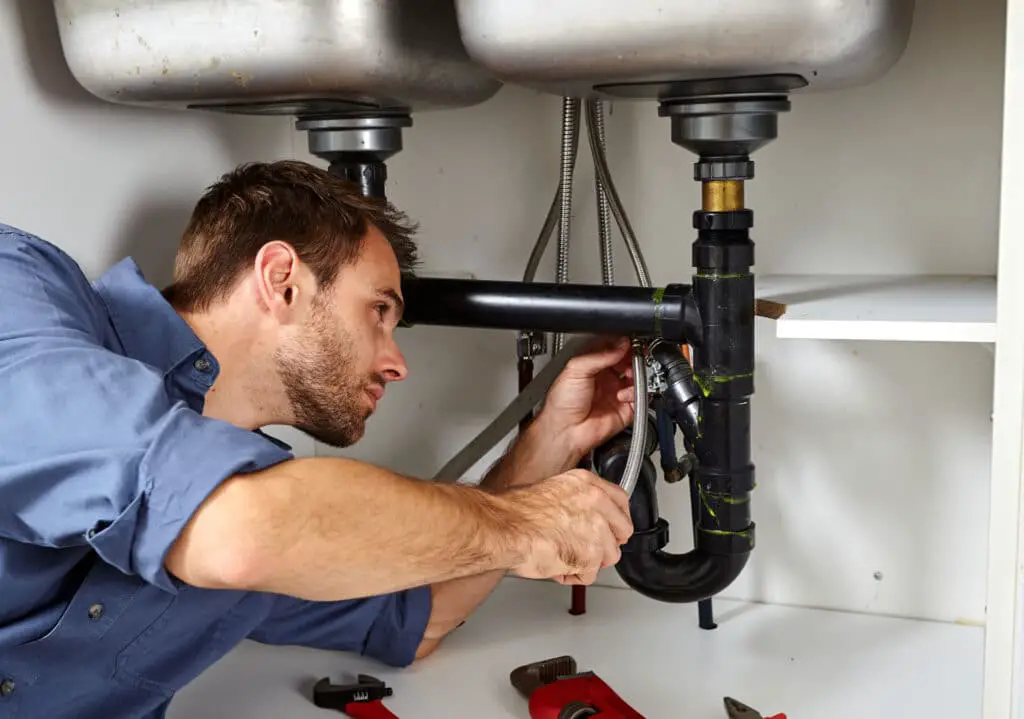
What Is An Auger Used For In Plumbing?
A plumber’s snake or drain snake is a slender, flexible auger used to dislodge clogs in plumbing. Plumbers use snakes for stubborn blockages that won’t come out with a plunger. Some call it a toilet jack.
An auger, often known as a plumber’s snake or drain snake, removes water and waste obstacles.
Augers move through plumbing networks and release or entangle impediments.
Augers have spiral-ended, flexible steel cables. It Augers manually or motorized break up or grip obstructions while the coiled end is in the drain or pipe.
Can You Use An Auger On Pvc Pipe?
When cleaning PVC pipes, use these powered augers carefully to avoid pipe damage. To protect your pipes, call a professional using high-quality tools.
An auger can remove PVC pipe clogs without damaging them.
Use an auger on PVC pipes with caution to avoid damage. PVC pipe augers should be created first. Plastic or rubber covers the spiral end of these augers to avoid PVC scratching.
Use mild pressure and avoid violent motions when inserting the auger into the PVC pipe. Compared to metal or cast iron pipes, PVC pipes are more fragile. Therefore, caution is needed to avoid pipe cracking or breaking.
For PVC pipes, utilize a manual or hand auger instead of a motorized one.
What Is The Benefit Of Auger?
An entry level handheld power auger uses a small petrol engine and gearbox to drive the head. It is suitable for drilling holes into ground, frozen soils, and ice.Usually used for gardening, tree planting, and fencing or pergola foundations.
The benefits of using an auger in various applications, including plumbing, are numerous and make it an invaluable tool for professionals and homeowners alike. Here are some key advantages of using an auger:
Efficient Clog Removal: Augers are highly effective in clearing clogs and blockages in drains and pipes. With their spiral-shaped ends and flexible cables, they can navigate through twists and turns, reaching deep into the plumbing system to break apart or extract debris causing the obstruction.
Versatility: Augers come in different types and sizes, allowing for versatility in tackling a wide range of clogs. Whether it’s a small hair clog in a bathroom sink or a more significant blockage in a main sewer line, there is an auger suitable for the job.
Non-Destructive Solution: Augers provide a non-destructive solution for addressing plumbing issues. Unlike methods that may involve pipe replacement or extensive digging, augers can often clear clogs without causing damage to the pipes or requiring major disruptions to the plumbing system.
Cost-Effective: By using an auger to clear clogs, homeowners and businesses can save money compared to more invasive plumbing solutions. Augers are generally more affordable than complex repairs or pipe replacements, making them a cost-effective option.
Time-Saving: Augers offer a quick and efficient way to clear clogs and restore proper water flow. With their ability to reach deep into pipes and break apart obstructions, they help save time and minimize inconvenience caused by plumbing issues.
Can An Auger Break A Pipe?
Some augers are powerful enough to break pipes apart completely.
When used properly, an auger is unlikely to break a pipe. However, it is important to exercise caution and follow guidelines to minimize the risk of pipe damage. Here are some considerations regarding the potential of an auger breaking a pipe:
Proper Auger Selection: Choosing the right type of auger for the job is crucial. Different augers are designed for specific pipe sizes and materials. It is important to use an auger that is appropriate for the pipe diameter and material to reduce the risk of damaging the pipe.
Gentle Application of Force: When using an auger, it is essential to apply gentle and controlled force. Forcing the auger too aggressively or using excessive pressure can put stress on the pipe and potentially cause it to crack or break. It is important to follow the manufacturer’s instructions and exercise caution while using the auger.
Overrotation increases the likelihood of auger tangles and pipe damage during removal. Use augers sparingly and without overrotation.
Age, rust, or other causes may weaken a pipe, making it more vulnerable to damage. In such circumstances, use an auger with caution and consult a plumber to establish the best course of action.

What Are The Risks Of Auger?
The practice of moving a raised auger may save time, but it exposes the worker to the hazards of upending and electrocution. Electrocution is a frequent result of moving a raised auger and coming into contact with electrical wires.
Although augers are safe and effective in clearing obstructions, they can have dangers. It is important to be aware of these risks and take appropriate precautions when operating an auger:
Avoid overpressing or stressing pipes.
Safety gloves and eyewear are needed for auger use. Avoiding fast movements and regulating the auger helps prevent accidents.
Chemical Exposure: Pouring chemicals or cleaning products down the drain might cause obstructions. Augers can expose users to toxic substances that might irritate skin and eyes. Be careful and take precautions to avoid chemical exposure.
Clogs or pipe obstacles can entangle rotating or coiled augers. This can complicate auger removal and cause issues. Avoid auger jams and seek professional aid.
What Does A Plumbing Auger Look Like?
Plumbing augers and snakes are long, flexible metal cables with a small, uncoiled spring and a handle. Snake auger heads resemble corkscrews.
Plumbing augers, commonly known as plumber’s snakes or drain snakes, are long, flexible cables with specialized ends for drain and pipe obstructions. Typical plumbing auger appearance:
Cable: A plumbing auger’s steel cable is its essential component. Long and flexible, the cable can be put deep into the pipe.
A handle or grip at one end of the cable gives the user leverage and control. To properly manipulate the auger, hold the handle firmly.
Spiral or Coiled End: The auger’s mechanical element is on the cable’s opposite end. This end breaks pipe clogs and extracts them. The spiral design engages and dislodges particles, cleaning effectively.
Plumbing augers vary in length to fit different obstructions and pipe sizes. Shorter augers work for sinks and bathtubs, while longer ones work for larger pipes or deeper plumbing systems.
Protective Covering: Some augers feature spiral end covers. This plastic or rubber covering prevents pipe damage while the auger is in use.
What Is Auger Material?
Augers are made of steel, however stainless and carbon steel have differing qualities and endurance. Lots of augers have diamond tips or cores.
Augers bore holes and extract stuff from the earth using auger materials. Construction, agriculture, mining, and environmental sciences employ augers.
The auger material depends on the drilling or removal application and material. Augers are made of strong, durable, and wear-resistant materials.
Steel augers are popular because they are strong and bend-resistant. They can drill through soils, rocks, and sediments. Applications with damp or corrosive environments benefit from stainless steel augers’ corrosion resistance. Tungsten carbide augers are used to drill concrete and frozen ground because they are incredibly hard.
Auger materials can include metals and synthetic materials such reinforced plastics or composites. Their chemical resistance and light weight make these materials popular.
Are There Any Alternatives To Using An Auger?
There are a few alternative methods for clearing clogs in plumbing systems. Chemical drain cleaners, plungers, and homemade remedies like baking soda and vinegar can sometimes be effective for minor clogs.
Yes, there are several alternatives to using an auger depending on the specific task or application. Some of the commonly used alternatives include:
Excavators: Heavy machinery with buckets or hydraulic breakers can excavate holes or extract items. They thrive on a variety of soils.
These massive machines employ hydraulic pressure to drive drilling bits into the ground. Construction, mining, and geotechnical exploration employ them. Trucks and excavators can carry hydraulic drills that can drill through various materials.
Hand tools: For minor jobs or physical labor, shovels, picks, or post hole diggers can dig holes or remove items. This labor-intensive method may be cost-effective for some applications.
Pneumatic drills, or jackhammers, use pressurized air to drill. Construction, demolition, and mining use them to crack concrete and rock.
Core drills: Core drills make precise holes in concrete and asphalt. Construction and infrastructure projects that require accuracy employ them.
Directional drilling is utilized in oil and gas and subsurface utility installations.

Conclusion
An auger is an invaluable tool in the plumbing field, providing a reliable and efficient solution for addressing clogged drains and pipes. Whether it’s a minor blockage in a sink or a stubborn obstruction in a sewer line, augers offer plumbers the ability to effectively clear the way for proper water flow and waste disposal. The versatility of augers lies in their design and functionality. With their long, flexible cables and spiral-shaped ends, they can navigate through pipes, reaching inaccessible areas where clogs tend to accumulate. By rotating and breaking apart debris or entangling it for removal, augers are capable of tackling a wide range of materials that hinder the plumbing system’s performance.
Plumbers can choose from handled and motorized augers to suit their needs.Customized augers may solve everything from little bathroom clogs to major commercial building blockages.
By utilizing augers, plumbers can save time, money, and resources by avoiding the need for more invasive methods like pipe replacement or extensive digging. Augers offer a cost-effective and non-destructive approach to clearing blockages, minimizing disruption to plumbing systems and the surrounding infrastructure.




